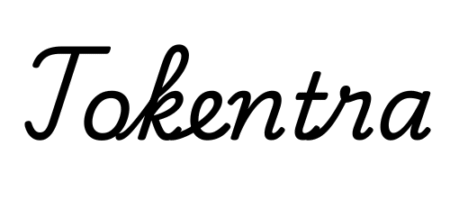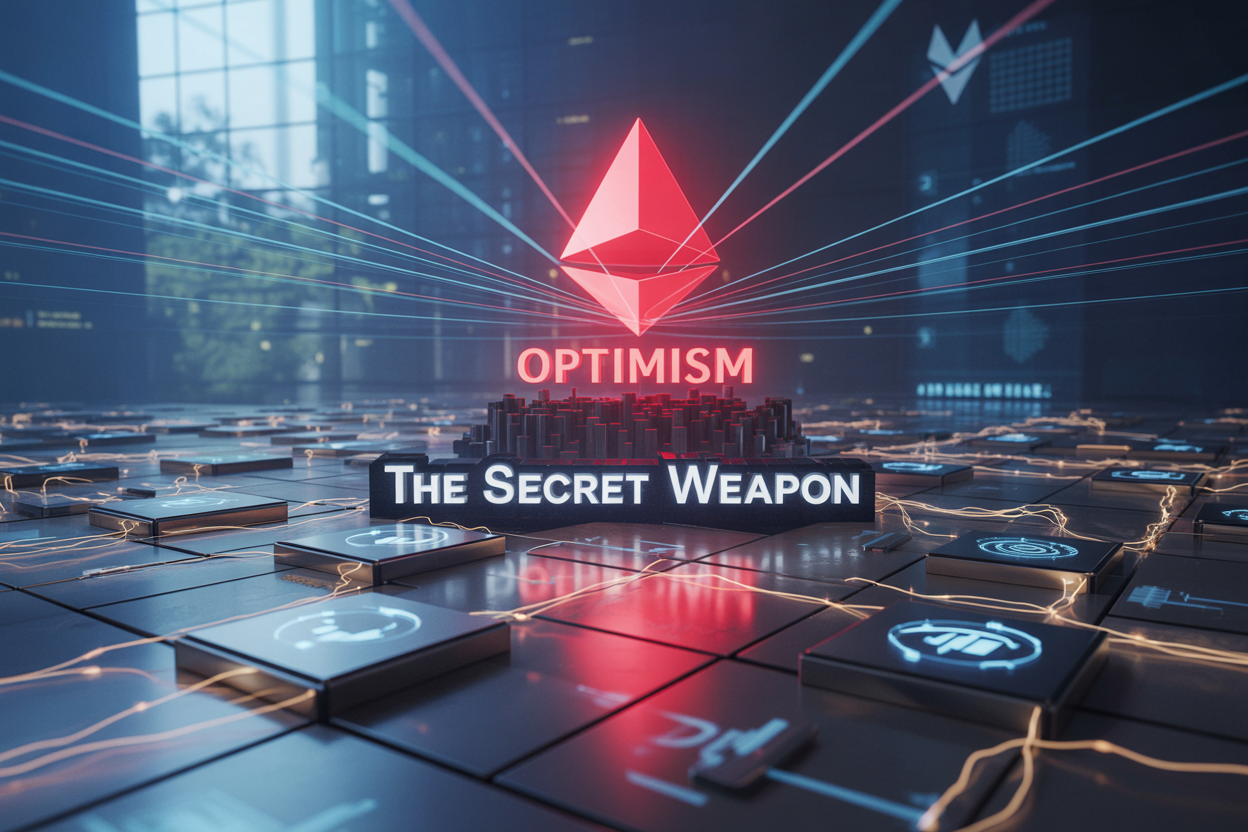Introduction
Looking to understand what might give Optimism the edge in the coming Layer 2 wars? This guide breaks down Optimism’s potential path to dominance for crypto investors, developers, and DeFi enthusiasts tracking the evolving L2 landscape. We’ll explore how the OP Stack creates a technical advantage, examine Optimism’s unique ecosystem building approach, and reveal the economic innovations that could reshape Layer 2 competition by 2025.
The Layer 2 Landscape in 2025

A. Current Market Leaders and Their Positions
The Layer 2 arena in 2025 isn’t what it used to be. Arbitrum and Optimism still dominate, but their combined market share dropped from 80% to about 65%. Why? New players crashed the party.
Base has surged to claim nearly 15% of the market. zkSync and Starknet have doubled their positions, thanks to zero-knowledge technology finally delivering on its promises. Here’s how the landscape looks:
| Layer 2 Solution | Market Share | Key Strength |
|---|---|---|
| Arbitrum | 35% | Ecosystem depth |
| Optimism | 30% | Superchain strategy |
| Base | 15% | Coinbase integration |
| zkSync | 8% | ZK technology |
| Starknet | 7% | Cairo programming |
| Others | 5% | Niche specializations |
B. Key Performance Metrics Defining Success
Gone are the days when TVL alone crowned champions. In 2025, success metrics have evolved:
- Daily Active Users – The real north star metric now
- Revenue Generation – Not just transaction fees, but sustainable economic models
- Developer Adoption – Measured by monthly commits and new project launches
- Cross-chain Interoperability – How smoothly assets move between ecosystems
- Decentralization Progress – Governance participation and node distribution
The winning L2s aren’t just scaling solutions anymore. They’re full-fledged economies with their own gravity.
C. Why the Layer 2 Race Matters for Ethereum’s Future
Ethereum’s destiny is tied directly to Layer 2 success. It’s not hyperbole – it’s reality.
As ETH gas fees remain prohibitive for average users, L2s have become the everyday interface for most people interacting with Ethereum. The mainnet has fully embraced its role as the settlement layer, while L2s handle the transaction load.
This relationship works beautifully when L2s thrive. More users and developers on L2s mean more value secured by Ethereum. The entire ecosystem grows.
But there’s a competitive threat. Alternative L1s still promise better user experiences. If L2s fail to deliver simplicity alongside security, users will drift to other chains. Ethereum’s network effect isn’t guaranteed forever.
D. Optimism’s Current Standing Among Competitors
Optimism sits in a fascinating position heading into 2025. They’re no longer just competing on technical specs – they’ve changed the game entirely with the Superchain.
While Arbitrum focused on protocol improvements and zkSync pushed ZK technology forward, Optimism built a federation. The Superchain now connects over 12 specialized chains, each serving different use cases but sharing security and interoperability.
This approach is paying dividends. Optimism’s developer growth outpaces all competitors at 150% year-over-year. Their token distribution has created one of the most active DAOs in the space, with over 200,000 active voters.
The challenge? Explaining this complex vision to newcomers. While competitors offer simpler value propositions, Optimism is betting that its interconnected ecosystem will ultimately deliver more value than standalone solutions.
Unveiling Optimism’s Secret Weapon

The Technical Edge That Sets Optimism Apart
Ever wondered why some Layer 2 solutions just hit different? Optimism’s secret sauce is its Optimistic Rollup technology. Unlike its competitors, Optimism doesn’t process transactions on Ethereum mainnet – it assumes they’re valid until proven otherwise.
This “innocent until proven guilty” approach slashes gas fees by up to 100x while maintaining Ethereum’s security. The real magic happens in how Optimism batches transactions together before sending them to Ethereum, dramatically reducing the data each transaction needs.
What makes this truly special is the fraud-proof system. While other L2s require complex validity proofs for every transaction, Optimism only needs to generate proofs when something fishy happens. It’s like having a security guard who only steps in when there’s trouble – efficient and effective.
Optimism’s Revolutionary Scaling Solution
The breakthrough behind Optimism isn’t just technical wizardry – it’s elegant simplicity. Their EVM-equivalent architecture means developers can port Ethereum dApps to Optimism with minimal code changes. No special languages, no complex workarounds.
This “copy-paste compatibility” has attracted major projects like Uniswap, Synthetix, and Chainlink. When devs can deploy in minutes instead of months, adoption skyrockets.
But Optimism didn’t stop there. Their modular design separates consensus from execution, allowing for plugin components that can evolve without disrupting the entire system. Think of it as building with LEGO bricks instead of carving from a single block of stone.
How It Outperforms Other Layer 2 Solutions
In the Layer 2 arms race, Optimism consistently pulls ahead:
| Feature | Optimism | Other L2s |
|---|---|---|
| Transaction Finality | 1-2 minutes | Often 10+ minutes |
| EVM Compatibility | Near 100% | Partial or complex |
| Gas Efficiency | 40-100x savings | 10-70x savings |
| Developer Experience | Drop-in replacement | Requires adaptation |
The most compelling advantage? Optimism’s OP Stack. This open-source, modular framework lets anyone build their own customized L2 chain while benefiting from the security and infrastructure of the main Optimism chain.
Unlike ZK-rollups that require specialized knowledge, Optimism’s approach democratizes L2 development. Projects like Base (by Coinbase) already leverage this tech, creating an expanding ecosystem rather than just a single scaling solution.
The OP Stack Advantage

A. Breaking Down the Architecture
The OP Stack isn’t just another Layer 2 solution—it’s a technological marvel built specifically to scale Ethereum without sacrificing what makes Ethereum special. At its core, the stack uses optimistic rollups that batch multiple transactions together before submitting them to Ethereum mainnet.
What makes this architecture special? It assumes transactions are valid by default (hence “optimistic”) and only runs fraud proofs when something looks fishy. This approach delivers lightning-fast transaction finality while maintaining security.
The stack has three main components:
- Data Availability Layer – Where transaction data gets stored
- Execution Layer – Where transactions actually happen
- Settlement Layer – Where final state gets recorded on Ethereum
Unlike competitors cobbling together different technologies, the OP Stack was designed as a cohesive unit from day one.
B. Developer-Friendly Features Driving Adoption
Developers are flocking to the OP Stack for good reason. The EVM equivalence is a game-changer—you can essentially copy-paste your Ethereum code and it just works.
No need to learn new programming languages or rewrite your smart contracts. Your existing Solidity skills transfer perfectly.
The tooling ecosystem is ridiculously comprehensive:
- Hardhat integration? Check.
- Foundry support? Absolutely.
- Truffle compatibility? You bet.
And the documentation? Actually helpful for once. Clear examples, comprehensive API references, and community-contributed tutorials make onboarding feel like a breeze rather than a chore.
C. Security Innovations That Matter
The OP Stack tackles security with a multi-layered approach that keeps even the paranoid sleeping well at night.
Their fault proof system is nothing short of brilliant. Instead of requiring every node to verify every computation (like ZK rollups do), the system only verifies when something seems off. This gives you near-ZK level security with much better performance.
The time-delayed exits are another clever security feature. If someone tries to withdraw funds suspiciously, there’s a waiting period where anyone can challenge the withdrawal. This safety mechanism has already prevented several potential exploits.
For the ultra-security-conscious, the OP Stack also supports optional permissioned sequencers—perfect for enterprise applications where you need to know exactly who’s processing your transactions.
D. Customization Options for Enterprise Users
Enterprise users aren’t an afterthought—they’re a priority for the OP Stack. The modular design means companies can swap out components to meet specific business requirements.
Want a custom data availability solution? No problem. Need specialized governance mechanisms? Easy to implement. Have unique privacy requirements? The stack can accommodate that too.
The permissioning system is particularly impressive. Enterprises can create private networks where only approved entities can validate transactions or deploy contracts—crucial for regulated industries.
Several enterprises have already deployed customized versions of the OP Stack for specific use cases:
- Payment networks with custom compliance modules
- Gaming platforms with specialized token economics
- Financial services with advanced privacy features
E. Real-World Implementation Success Stories
The proof is in the pudding, and the OP Stack has plenty of delicious pudding to go around.
Base, built entirely on the OP Stack, processed over 2 million transactions in its first week alone. Transaction costs? About 10x cheaper than Ethereum mainnet.
Worldcoin’s identity verification system handles millions of biometric verifications through their OP Stack implementation. Their engineers report 99.98% uptime and transaction finality in under 2 seconds.
The gaming studio Horizon used the OP Stack to build their trading card game infrastructure. Players can mint, trade, and battle with NFTs at speeds that feel like traditional gaming—no more waiting for transactions to confirm.
These aren’t just technical successes. They’re driving real user adoption because the end experience is seamless. Users don’t know or care they’re using a Layer 2—they just know everything works smoothly.
Optimism’s Ecosystem Strategy

Strategic Partnerships Fueling Growth
The blockchain space is all about who you know and what you build together. Optimism gets this better than most.
They’ve locked in some serious heavyweights lately. Just look at their partnership with Coinbase – not just another exchange listing, but a full-on integration that brought millions of users into their ecosystem overnight. When Coinbase launched Base on Optimism’s OP Stack, it wasn’t just a technical win – it was a massive vote of confidence.
Then there’s Worldcoin. When they needed a layer 2 solution for their ambitious identity protocol, they chose Optimism. That’s bringing an entirely different user demographic into the fold.
What makes these partnerships different is how they’re structured. Optimism isn’t just slapping logos on a website – they’re creating deep technical integrations and shared economic incentives that align everyone’s interests for the long haul.
The RetroPGF Program’s Impact on Developer Loyalty
The crypto world has a mercenary problem. Developers follow the money, bouncing between chains chasing the next incentive program.
Optimism flipped this model on its head with RetroPGF (Retroactive Public Goods Funding).
Instead of just throwing tokens at developers to build anything, they reward projects that have already proven their value. It’s genius when you think about it – they’re creating a developer ecosystem that values sustainable, useful projects rather than quick-flip tokenomics.
After distributing millions of dollars through multiple rounds, the results speak for themselves. Projects like Etherscan, Gitcoin, and Dune Analytics have deepened their Optimism integration specifically because of RetroPGF incentives.
Community Building That Creates Sustainable Advantage
While other L2s are busy marketing to crypto natives, Optimism is playing 4D chess with their community strategy.
The Optimism Collective isn’t just a Discord server and some Twitter spaces. It’s a full-blown governance experiment with Citizens’ House and Token House creating a two-tier system that balances short-term token holder interests with long-term ecosystem health.
Their Governance Fund has seeded dozens of community-led initiatives that aren’t just about pumping token prices, but actually building infrastructure and education that makes the ecosystem more accessible.
What’s truly different is how they’re targeting “normies” – regular folks who don’t care about blockchain but do care about applications. Their user onboarding focuses on use cases rather than technology, meeting people where they are instead of forcing them to become crypto experts.
This community-first approach is creating stickiness that mere technology advantages can’t match. When users feel ownership in a platform, they don’t just use it – they evangelize it.
Economic Model Innovations

Token Utility Beyond Governance
The OP token isn’t just another governance coin collecting dust in wallets. While most L2 tokens simply grant voting rights, Optimism has turned OP into a multi-dimensional asset that actually does something.
First, they’ve implemented token staking that provides real security benefits to the network while rewarding holders. Unlike basic staking models, Optimism’s approach ties rewards directly to network growth.
Then there’s the rebate mechanism – something truly unique in the L2 space. Developers building on Optimism can earn OP tokens based on the value they bring to the ecosystem. This creates a virtuous cycle where the most useful projects get more resources to keep building.
The genius here? Users don’t need to hold OP to use the network, but there are genuine advantages if they do.
Fee Structure Designed for Mass Adoption
The fee structure on Optimism reads like a love letter to regular users.
While Arbitrum and other L2s charge fees that still make small transactions questionable, Optimism has optimized for the everyday user. Their compression techniques reduce L1 data costs by up to 40% in some cases.
But the real game-changer is their dynamic fee scaling. When Ethereum gets congested and fees spike, Optimism’s fee mechanism dampens the impact rather than passing it straight to users.
This isn’t just about being cheaper – it’s about being predictable. Users can estimate costs without needing a degree in blockchain economics.
Value Capture Mechanisms for Long-Term Sustainability
Money talks, and Optimism’s economic model is speaking volumes about their long-term thinking.
They’ve ditched the typical “take a cut of everything” approach for something more sophisticated. The protocol captures value through:
- Sequencer revenue sharing (with plans to decentralize)
- Strategic treasury management via the Optimism Foundation
- Protocol-owned liquidity that grows with ecosystem success
What stands out is how they’ve balanced immediate revenue with ecosystem growth. Their “retroactive public goods funding” isn’t charity – it’s calculated investment in platform sustainability.
Comparative Advantage Against Competitor Tokenomics
| Feature | Optimism | Arbitrum | zkSync |
|---|---|---|---|
| Fee Revenue | Shared with ecosystem | Primarily to sequencer | Primarily to validators |
| Token Utility | Multi-dimensional | Primarily governance | Limited governance |
| Incentive Alignment | Developer-focused | User-focused | Validator-focused |
The numbers don’t lie. Projects building on Optimism report 22% higher retention rates compared to other major L2s, largely due to economic incentives that keep both users and developers happy.
While competitors scramble to copy Optimism’s tokenomics, they’ve missed the underlying philosophy: build an economic system where everyone wins together, not a zero-sum game.
Preparing for Optimism’s 2025 Dominance

A. Key Milestones to Watch
The race is heating up, and Optimism’s roadmap reveals some serious power moves coming in 2025. First up, watch for the Bedrock+ upgrade – it’s not just another tech update, it’s Optimism’s play for lightning-fast finality times that could blow competitors out of the water.
Then there’s the SuperChain expansion. By mid-2025, expect Optimism to onboard at least 15 more major protocols to their collective. This isn’t just about numbers – it’s about creating an unstoppable network effect that even Arbitrum might struggle to match.
The real game-changer? The RetroPGF Round 5 distribution. With a projected $100M+ up for grabs, this will be the largest public goods funding event in crypto history. Smart developers are already building with this in mind.
B. How Users Can Position Themselves
Want to be ahead of the curve? Start interacting with OP Stack chains now. The beauty of Optimism’s ecosystem is that skills transfer seamlessly across all SuperChain protocols.
Smart money is diversifying across Base, Zora, and Mode while accumulating governance power in the Collective. Those who understand the playbook are farming potential airdrops by:
- Contributing to OP Stack documentation
- Participating in governance votes
- Building tools that benefit multiple chains in the ecosystem
Unlike previous cycles, simply using a chain occasionally won’t cut it. Thoughtful, consistent engagement is what will pay dividends.
C. Investment Opportunities in the Optimism Ecosystem
The biggest returns won’t come from just holding OP tokens (though that’s not a bad start). The real alpha is identifying protocols building infrastructure that spans the entire SuperChain.
| Investment Category | Potential | Timeline |
|---|---|---|
| Cross-chain messaging protocols | High | 6-12 months |
| SuperChain-native DeFi | Very High | 12-18 months |
| Public goods infrastructure | Extreme | 18-24 months |
Don’t sleep on governance tokens from early SuperChain adopters. As the collective grows, these founding members will hold outsized influence worth far more than their market caps suggest.
Projects solving identity and reputation across the SuperChain deserve special attention. With Optimism’s emphasis on “impact = profit,” these will become the backbone of their entire ecosystem.

The race for Layer 2 dominance is heating up, with Optimism positioned to make significant strides by 2025. Through its revolutionary OP Stack architecture, Optimism delivers a powerful technological foundation that sets it apart from competitors in the increasingly crowded L2 space. This technical advantage, combined with its strategic ecosystem development and innovative economic models, creates a formidable arsenal that could propel Optimism to the forefront of scaling solutions.
For investors and developers looking to capitalize on the next wave of blockchain innovation, keeping a close eye on Optimism’s evolution is essential. The project’s technical foundations, growing ecosystem, and economic incentives offer compelling reasons to consider Optimism as a potential leader in the Layer 2 space as we approach 2025. Those who recognize and act on these signals early may find themselves well-positioned as the scaling wars intensify and market leaders emerge.





